Timeline 4810T Features
The Timeline 4810T isn't the thinnest notebook on the block, but it certainly holds its own, measuring 1.1" at its thickest point and slightly less, 0.9" at its thinnest. With a weight of 4.2 pounds, it's about average for a modern 14-inch laptop, though you will find many current 13-inch notebooks that are heavier that the Timeline.
Looking at its front side with the lid closed we see a 5-in-1 card reader (SD, MMC, MS, MS PRO, xD) and a battery indicator light which shows amber when the battery is charging and blue when it is fully charged.


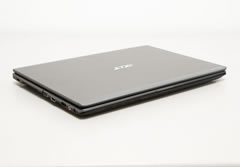

Moving to the right side I was pleasantly surprised to find a tray-loading optical drive on such a slim system. There's also a single USB 2.0 port, as well as an Ethernet port, DC-in jack and a Kensington lock slot. The rear of the notebook houses the battery bay and is otherwise plain, while on the left we find headphone and microphone jacks, HDMI port, VGA port, ventilation slots, and a couple more USB 2.0 ports (3 total).
On the bottom there are a few additional ventilation slots, several small rubber feet, the battery release latch, and a removable panel to access the hard drive bay and two memory slots, both of which are populated by 2GB DIMMs.
On top of the glossy 14" LED backlit display there's an Acer Crystal Eye webcam and microphone. Just above the keyboard you'll find a strip containing two speakers, as well as touch controls for enabling Wi-Fi connectivity, Acer's Backup Manager, Acer's Smart Power mode and a HDD activity light. The power button is positioned on the left side of this bar, while the optical drive eject button is located at the far left.
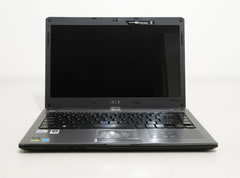

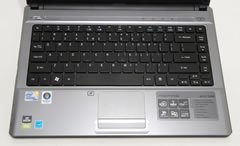
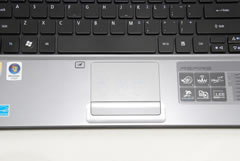
Speakers on the Acer Timeline 4810T are about average and a little quieter at max volume than some netbooks I have looked at. They get the job done but don't expect anything jaw-dropping.
The keyboard on this Timeline is a thing of beauty; Acer adopted island-style keys like those found on Apple's MacBook line. They are slightly spaced apart, have a glossy black coating and are rounded on the edges. Key layout is nice, with full size buttons across the board, and all keys in their appropriate locations – I personally like the Ctrl key on the corner with the Fn key at its right side, and not the opposite.
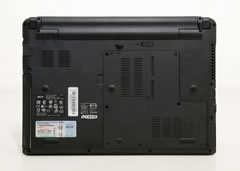
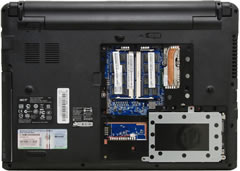
The lid is sturdy and the keyboard only has a tiny bit of flex, which isn't noticeable unless you apply a lot of force to the keys. Some users may not care for the glossy screen coating and larger than normal gaps between keys, but neither of these features bothered me.
Below the keyboard is the multi-gesture touchpad and touchpad toggle button, a nice feature not found on all notebooks. The touchpad is slightly inset with plenty of surface area, but I'm not a fan of the single-piece mouse button configuration. It may look good from an aesthetics point of view, but for actual usage I prefer two separate buttons for the left and right click actions.
